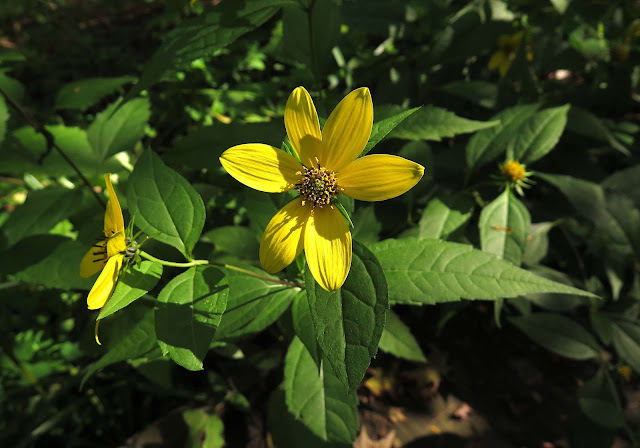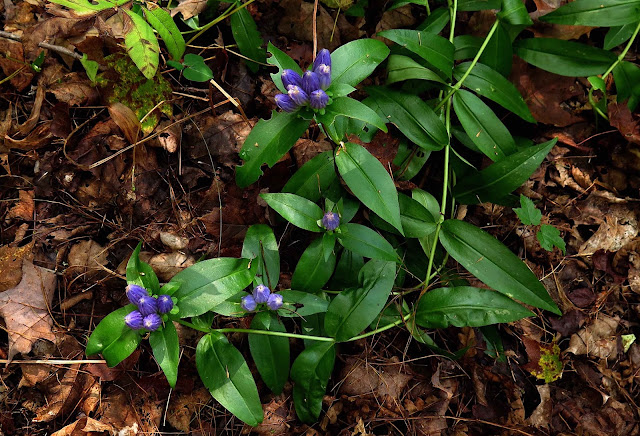As summer draws to a close, I love to visit the Orra Phelps Nature Preserve in nearby Wilton, hoping to visit some of my favorite late-season wildflowers. Standing on the bridge that spans the usually rushing Little Snook Kill, what I mostly saw (aside from the lack of rushing water!) was vast amounts of green. Would I find many colorful wildflowers today?
Indian Cucumber Root (Medeola virginiana) spends most of its growing season kind of hiding amid all the other greenery of the forest floor, with its small, spidery flowers dangling mostly unseen beneath its top tier of leaves. But as fall approaches, those small flowers move up to the top and produce shiny blue-black berries standing erect on red pedicels. And those berries would be showy enough in their own right, but the leaves beneath them create a fine foil for the fruit by splashing the center of the leaf cluster with brilliant scarlet.
As I continued along the creek bank I nearly stepped on this generous display of Closed Gentian (Gentiana clausa). Having toppled under the weight of its large flower clusters, the plant lay hidden among the surrounding greenery until I was nearly upon it.
The gentians I was especially hoping to see today were of another genus altogether, the Fringed Gentians (Gentianopsis crinita) that grow in an open wet meadow some distance from the creek. Since surrounding pines and poplars keep moving into their sunlit sandy-soiled space, I always fear that the population of this queen of the autumn wildflowers may not persist at this site. But all these glints of bright blue awaited me as I entered their bright space, calming my fears for at least one more year.
The numbers of plants vary each year, since Fringed Gentian is a biennial, growing from seed to form basal leaves the following year and then producing flowers the year after that. It seemed that there were fewer individual plants this year, but most of the plants that did spring up bore multiple blooms of the most incredible radiant royal blue.











1 comment:
Fringed Gentians grow up at Dorcas Bay!
Post a Comment